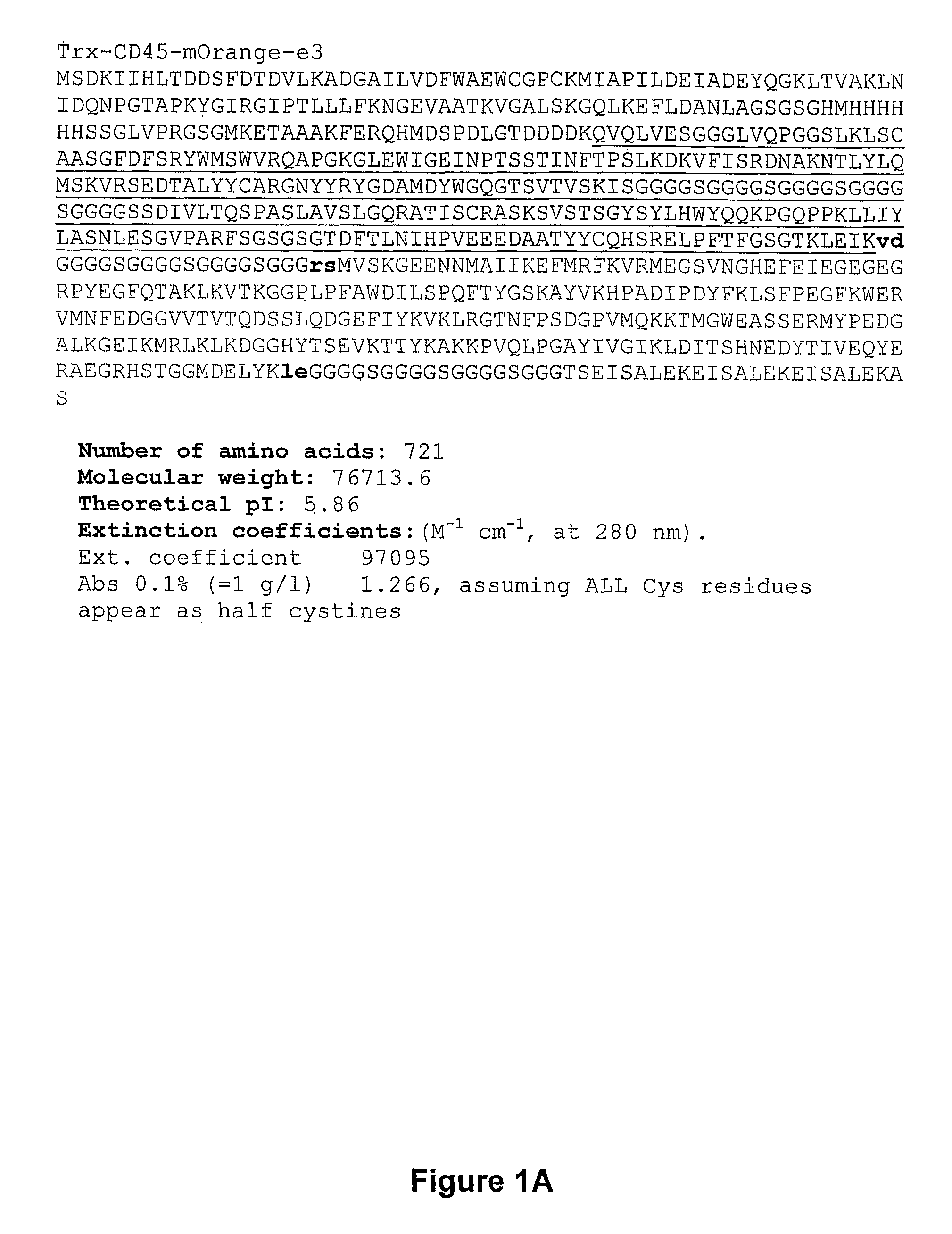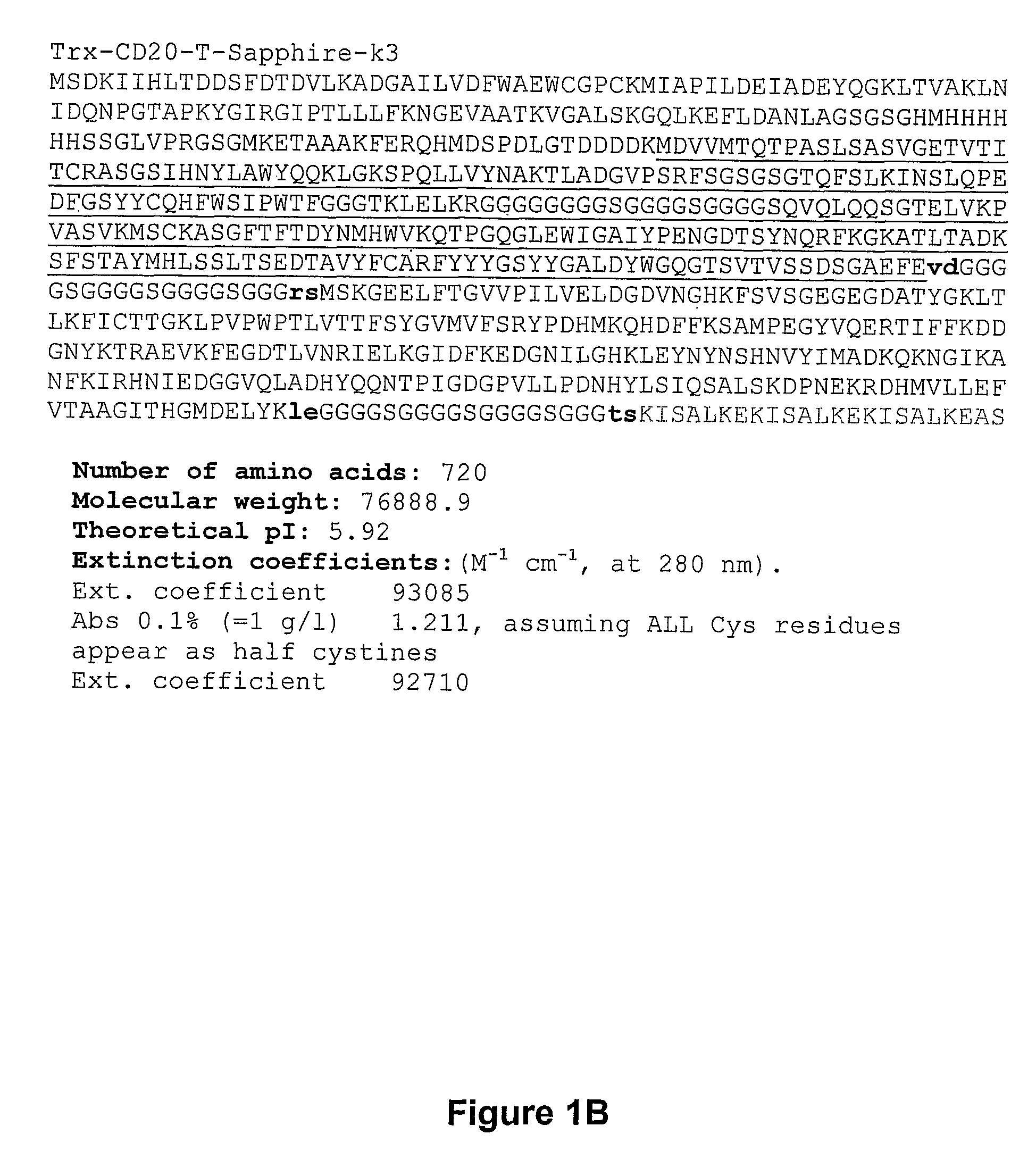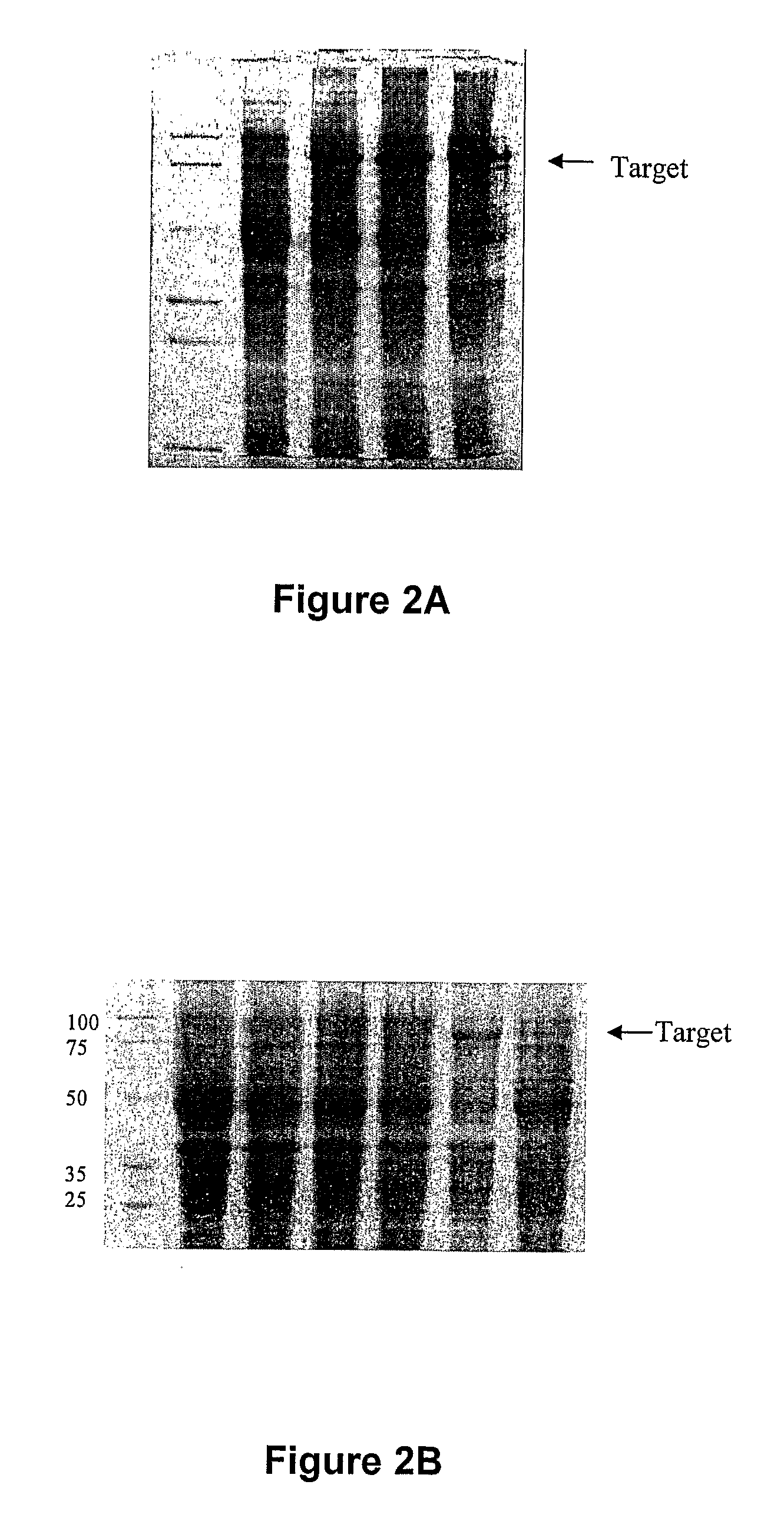Demibodies: dimerization-activated therapeutic agents
a dimerization and therapeutic agent technology, applied in the field of dimerization activation therapeutic agents, can solve the problems of not reaching wide pathological therapeutic use, lack of fc domain, and inability to induce adcc or cdc, and achieve the effect of reducing the risk of non-specific binding and enhancing target specificity
- Summary
- Abstract
- Description
- Claims
- Application Information
AI Technical Summary
Benefits of technology
Problems solved by technology
Method used
Image
Examples
example 1
Generation of Demibodies
[0171]The genes encoding DBA and DBB were synthesized (Schemes 1 and 2) and cloned into the pET32a vector to generate pET32a-30103s1, and pET32a-30103s2. After transformation into E. coli BL-21(DE3), several colonies from each transformation were selected, and tested for protein expression. The appearance of a band at ˜78 kDa from an induced sample was taken to represent the successful expression of the proteins and highly expressing colonies (colony 5 for pET32a-30103s1pET32a 30103s2, and colony 3 for pET32a-30103s2) were used in successive expression experiments (FIGS. 2A, B). In both cases the proteins were expressed as inclusion bodies so after large-scale expression (1L), the proteins were purified by metal affinity chromatography under denaturing conditions, and refolded to yield a final protein concentration of 0.1 and 0.9 mg / mL for Trx-DBA and Trx-DBB, respectively. The refolded proteins were ˜80% pure as judged by SDS-PAGE (FIG. 2C).
[0172]
Scheme 1: D...
example 2
Expression and Purification
Subcloning 30103 S1 into pET32 Vector
[0187](1) The 30103 S1 gene was synthesized and cloned to pET32 vector using Kpn I and Hind III.[0188](2) The resulted clone pET-30103 S1 was verified by DNA sequencing.
Transformation of E. coli BL-21(DE3)[0189](3) Five nanogram of the pET-30103 S1 plasmid was transformed into E. coli BL-21(DE3).[0190](4) Three colonies were selected. These clones were inoculated and grown in LB media and induced by 0.5 mM / L IPTG for 4 hr at 37° C. The expression results were detected by SDS-PAGE (12% w / v) (FIG. 7). Colony 3 was selected for future expression.
Optimization[0191](5) The fusion protein was expressed at 25° C. and 15° C. The results are shown in FIG. 8.
Protein Expression[0192](6) The E. coli strain was cultured in 1 L LB media for 4 hours and then induced by 0.5 mM / L IPTG for a further 4 hours at 37° C.[0193](7) The cells were harvested by centrifugation. The cell paste was resuspended in 70 mL PBS and then sonicated on ice...
example 3
Expression and Purification
Subcloning 30103 S2 into pET32 Vector
[0198](1) The 30103 S1 gene was synthesized and cloned to pET32 vector using Kpn I and Hind III.[0199](2) The resultant clone pET-30103 S2 was verified by DNA sequencing. Transformation of E. coli BL-21(DE3)[0200](3) Five nanogram of the pET-30103 S2 plasmid was transformed into E. coli BL-21(DE3).[0201](4) Seven colonies were selected. These clones were inoculated and grown in LB media and induced by 0.5 mM / L IPTG for 4 hr at 37° C. The expression_results were detected by SDS-PAGE (12% w / v) (FIG. 10). Colony 5 was selected for future expression.
Optimization[0202](5) The fusion protein was expressed at 25° C. and 15° C. The results are shown in FIG. 11.
Protein Expression[0203](6) The E. coli strain was cultured in 1 L LB media for 4 hours and then induced by 0.5 mM / L IPTG for a further 4 hours at 37° C.[0204](7) The cells were harvested by centrifugation. The cell paste was resuspended in 70 mL PBS and then sonicated on...
PUM
| Property | Measurement | Unit |
|---|---|---|
| concentrations | aaaaa | aaaaa |
| concentrations | aaaaa | aaaaa |
| emission wavelength | aaaaa | aaaaa |
Abstract
Description
Claims
Application Information
 Login to View More
Login to View More - R&D
- Intellectual Property
- Life Sciences
- Materials
- Tech Scout
- Unparalleled Data Quality
- Higher Quality Content
- 60% Fewer Hallucinations
Browse by: Latest US Patents, China's latest patents, Technical Efficacy Thesaurus, Application Domain, Technology Topic, Popular Technical Reports.
© 2025 PatSnap. All rights reserved.Legal|Privacy policy|Modern Slavery Act Transparency Statement|Sitemap|About US| Contact US: help@patsnap.com



